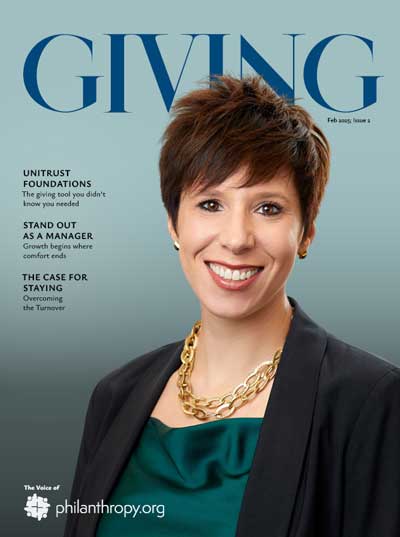A $100,000 bequest barely gets noticed. A $10,000 check, on the other hand, earns applause, credit, and sometimes even a bonus. That’s not a quirk—it’s the system you’ve built.
And the result is predictable: fundraisers chase the gifts that get rewarded, while legacy commitments—the ones with the biggest long-term impact—get ignored.
This isn’t about effort or talent. It’s about incentives. Until you change how you credit and celebrate gift officers, your planned giving program will keep limping along—underfunded, under-prioritized, and invisible.
The Incentive Blind Spot: Why Planned Giving Gets Ignored
Planned gifts are deferred. That’s the appeal to the donor—but the obstacle for the fundraiser.
- No immediate deposit.
- No credit toward annual goals.
- No dopamine hit.
Even when the gift is larger, it’s treated as invisible. That’s not how you motivate behavior. That’s how you bury it.
Fundraisers Are Playing a Game You Designed
Think about the scoreboard you’ve given them:
| Gift Type | Immediate Cash? | Credited Toward Goal? | Celebrated? |
|---|---|---|---|
| $5,000 check | Yes | Yes | Yes |
| $100,000 bequest | No | No (in most orgs) | No (maybe a thank-you) |
It’s no wonder legacy gifts get sidelined.
You’re asking fundraisers to run marathons in a sprint culture.
Fundraising Reality Check Tweet
Flip the Script: Reward Legacy Gifts Like You Mean It
Imagine if you gave full credit for confirmed legacy commitments—even if the dollars don’t arrive for 15 years.
(Of course, this only works if those commitments are real—verified intentions, not the inflated lists of “committed wills” that some online platforms love to generate. We unpacked that illusion here.)
What happens?
- Fundraisers prioritize legacy conversations.
- Donors feel supported, not rushed.
- Your long-term pipeline grows—fast.
In planned giving, behavior follows recognition. Recognition follows reporting. If you don’t track and reward legacy gifts, you won’t get more of them.
Law of Human Behavior Tweet
Create a Culture That Plants for the Future
Rewarding is the first step. Real change comes when you build it into your culture and metrics.
Here’s how:
- Track confirmed bequest intentions with a tool that produces real commitments—like the LegacyPlanner™—not inflated numbers from casual sign-ups.
- Credit fundraisers for those values just like major gifts.
- Celebrate legacy commitments at board meetings, all-staff briefings, and donor reports.
- Set soft goals for planned gifts the same way you do for major gifts.
- Report your “Legacy Pipeline” as its own metric.
Think of it as “Legacy-Inspired Revenue”—the future money you’ve already earned but haven’t deposited yet.
Immediate vs. Deferred: The Real Math
Let’s do the math.
| Scenario | Gift Amount | Timeline | Effort Required |
|---|---|---|---|
| Major gift campaign ask | $25,000 | This year | High |
| Bequest commitment | $100,000 | 5–15 yrs | Moderate |
What Happens When You Make This Shift?
Organizations that credit planned gifts like cash report:
- Higher morale among gift officers
- Bigger legacy pipelines
- Stronger donor stewardship
- More integrated campaigns blending current and deferred giving
- Better career development for staff—because planned giving is a people business, not a legal business. Fundraisers who know how to build trust, maintain relationships, and stay connected with donors advance further in their careers and lives.
You’re not just changing behavior—you’re building a future-ready organization staffed by professionals who know how to connect, not just transact.
Legacy gifts are easier to secure—because they don’t require cash on hand. They just require trust. The friction isn’t financial. It’s cultural.
Legacy Giving Reality Check Tweet
Final Thought: Reward the Farmers, Not Just the Hunters
Everyone loves the closer who brings in a big check. But who’s cultivating the orchard?
If you don’t reward the patient fundraisers—the ones planting seeds for tomorrow—you’ll always be stuck chasing squirrels.
Legacy giving isn’t about waiting. It’s about building. And no one builds without a blueprint and a reward.
So … What’s Next?
If you want more planned gifts, stop treating them like a side note on someone’s dashboard.
The solution isn’t pressure. It isn’t another goal buried in a sea of metrics. It’s recognition. Track legacy commitments. Credit them. Celebrate them. Make it clear—to your team, your board, and your donors—that these gifts matter.
Because when you reward legacy giving like cash, you don’t just change behavior. You change your future pipeline.
And if you need the tools to make that simple? We’ve got you covered. Whether it’s a plug-and-play legacy website, attending our boot camp, or the LegacyPlanner™ to track and steward real commitments, the point is this: start rewarding what counts.
Because if you don’t, your best gifts will keep slipping quietly into the background—while someone else gets the credit.
If you don’t reward legacy gifts, stop pretending you have a planned giving program.



